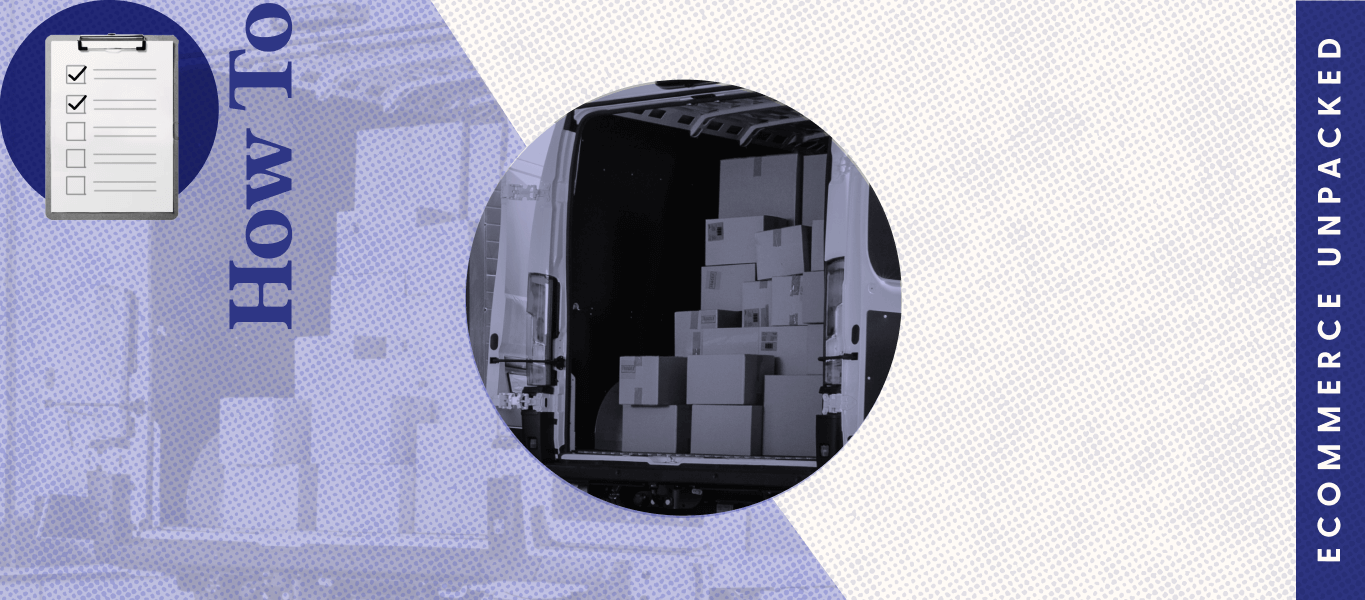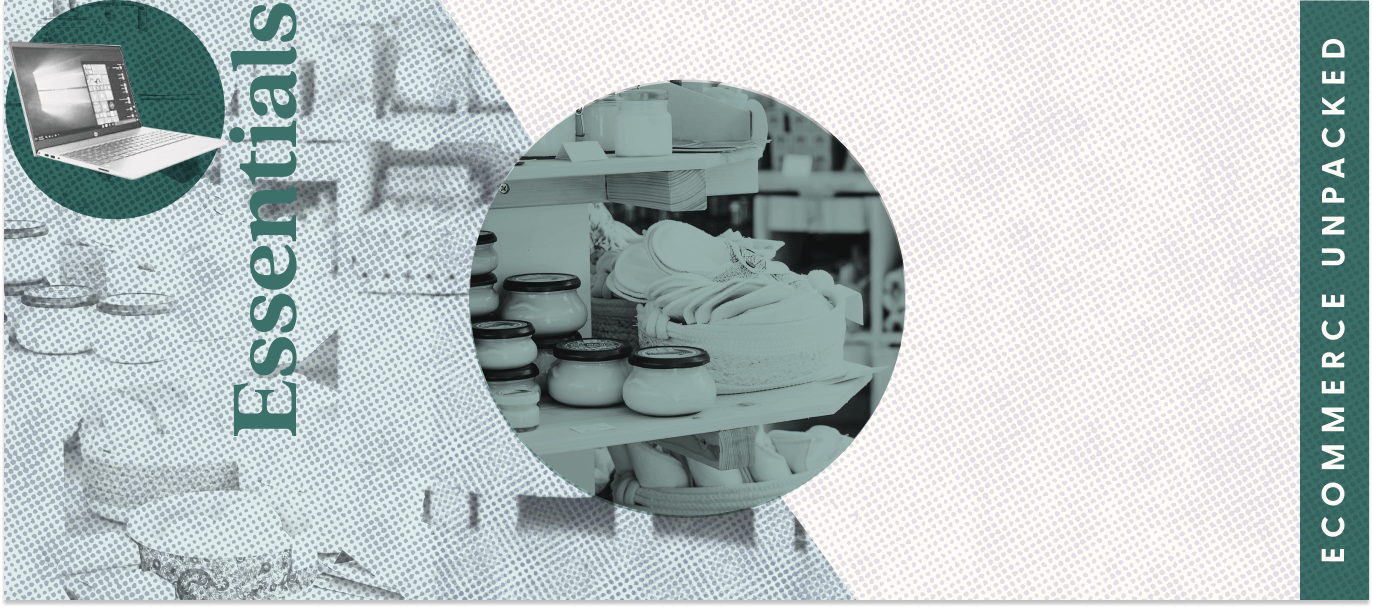In the B2C (business to consumer) ecommerce model, a company sells something to a consumer. Physical goods like clothes, digital products like music downloads, and services like grammar checking tools are all sold via B2C ecommerce channels.
Also referred to as retail ecommerce, the B2C model is wildly popular, representing about $5.2 trillion in sales worldwide in 2021.
B2C ecommerce’s many benefits include greater customer reach, reduced costs, and more personalized customer experiences. Challenges include limited customer interaction (when using third-party platforms), shipping concerns (particularly for global ecommerce companies), and data security.
If you’re ready to jump into this type of online business, five different sub-models exist, and we’ll explain all of them in this article.
Key takeaways
- B2C ecommerce businesses transact directly with consumers.
- B2C ecommerce merchants can sell physical goods, digital products, and services.
- The main advantages of B2C ecommerce include greater customer reach, reduced costs, and more personalized customer experiences.
- B2C ecommerce enterprises should be ready to face the challenges of limited customer interaction on third-party platforms, shipping concerns, and data security.
What is B2C ecommerce?
B2C (business to consumer) ecommerce involves direct sales between businesses and consumers in an online marketplace. If you’ve ever bought an item from Amazon or Etsy, you’ve participated in this business model.
Opening up an online store is relatively quick and easy, with few startup costs. Companies often don’t need to rent office space or hire many staff members. With small investments in time, supplies, and marketing, they can create an online shopping experience relatively quickly.
But B2C ecommerce stores compete with established retail brands. Since most online sales start with searches, competition for high-value keywords like “baby clothes” or “running shoes” can be fierce. It’s easy for an ecommerce business to get lost in the crowd.
What can B2C ecommerce businesses sell?
Anything a company can ship to a consumer is fair game for an ecommerce website.
Physical products
Clothes, computers, baby supplies, and household cleaning products are a few of the many physical products that ecommerce retailers sell directly to consumers. This category of B2C business is both easy to understand and incredibly popular.
Consider Amazon: This online ecommerce platform hosts a vast array of B2C merchants who collectively offer a staggering number of physical products. Many consumers consider this online store the first place to look for the items they want, and most Amazon customers use the site repeatedly and often.
Digital goods
Intangible items are also available via B2C ecommerce websites. Online courses, ebooks, and music files are a few of the items available in online marketplaces.
Services
In our digitally connected world, many consumers are also business owners. Close to 44% of Americans use a side hustle to meet budget gaps. They might need coaching, marketing help, writing assistance, and more. All of these services are available via B2C ecommerce websites and apps.
B2C ecommerce business models
While all B2C ecommerce companies sell directly to customers, their sales formats and marketing techniques can differ. These are a few of the most popular types of ecommerce business models:
Direct sellers
Companies with a robust website presence and plenty of loyal customers can jump right into the B2C ecommerce market by adding to their digital footprint. An online version of a physical store can allow customers to buy directly from the brand.
Online intermediaries
For brands or merchants that don’t have a website and are not interested in building one, online intermediaries like eBay, Amazon, and Trivago fill the gap.
These companies allow businesses to post their products on a known and trusted platform. Consumers can purchase through these sites, completing the transaction without interacting directly with the seller.
Advertising-based B2C
Brands can put a known website to work for them by buying ads on a well-recognized website to drive consumers to their sales portal. Customers complete the sale on their site, and they may come back for more online sales later.
Community-based B2C
Platforms like Facebook and Nextdoor allow people to connect with others around shared interests and locations. That represents an opportunity to market and sell products to like-minded groups or those in close physical proximity.
Fee-based B2C services
Some online retailers charge customers subscription fees for access to their products or services. Netflix, The New York Times, and others follow this model.
Benefits of B2C commerce
Starting a B2C ecommerce company requires hard work, persistence, and in many cases, a touch of luck. The B2C model comes with plenty of benefits that can make your effort more than worthwhile:
Reach more customers
Having an ecommerce brand means you can market to customers all over the world. You can invest in growing your website audience by putting various digital marketing tactics to work to reach buyers online.
Reduce certain overhead costs
An ecommerce store is often much cheaper than an in-person shop. You don’t need an expensive storefront with a monthly rent payment to serve your customers.
Personalize customer experiences
More than 70% of customers expect companies to give them personalized experiences. That’s hard to do in an in-person shop unless you know all of your customers by name or appearance. In an ecommerce shop, your software can recognize your most loyal customers and react accordingly.
Challenges of B2C ecommerce
Just as ecommerce comes with plenty of benefits, it also presents a few potential roadblocks. Understanding what the challenges are can help you plan for them. Here are a few of them:
Shipping & delivery
After checkout, customers expect their shipments to arrive quickly. The customer relationship can fall apart when an item never arrives or is damaged in transit. Brick-and-mortar stores don’t typically have this problem, as they often send customers home with their purchases. But plenty of online vendors know all about the pain of poor delivery and execution.
Data security
Choose the wrong payment gateways, and your customer’s credit card data could fall into the wrong hands. Even known payment processing partners sometimes encounter data breaches, including PayPal, who fell victim to one in 2017.
Your own ecommerce website could also be tempting to hackers who want to grab your customer data, payment details, product specs, and more.
Limited customer interaction on 3rd party platforms
Companies like Amazon use perks and rewards programs to keep customers coming back. If those shoppers use Amazon to buy your products, are they your fans? Or are they loyal only to Amazon?
If all your ecommerce sales are completed by third parties on their websites, customers may not even remember your name, much less feel any loyalty to your brand.
How to set up a B2C ecommerce business
Whether you’re an experienced entrepreneur or just getting started, you can open a B2C ecommerce business by following the proper steps. Research kicks off the work, and marketing makes success possible. Here’s what to do:
1. Identify a market gap.
Starting a business in a field that is already saturated with quality products can be a recipe for failure. Before you launch any ecommerce venture, validate your idea and make a plan. Ensure that no one is already doing exactly what you plan to do in the way you plan to do it.
Consider Who Gives a Crap. The founders launched the company to solve a humanitarian crisis (a worldwide lack of functional toilets) with a clever product (beautiful toilet paper). No one made a product just like this to serve a similar cause, and success quickly followed.
2. Validate your idea.
Market validation involves ensuring that your potential customers need your product. Here are four steps can get you started:
- Write things down. Determine your product’s value, target market, and pricing model.
- Assess. Determine how big your market really is and how much of it is up for grabs. Dig deep into the competition to get the data you need.
- Research. Use search engine data to see how often people search for the thing you’re planning to sell.
- Interview. Find a few potential customers, tell them your idea, and listen to what they have to say.
3. Develop your product or service.
Move past research and into the real world. Build your product and test it to ensure it does what you’ve promised. Pay close attention to your costs during this process. Your price point may change depending on how much your product takes to build.
4. Name your business and choose a legal structure.
You’ve done the research and built a product. It’s time to make your idea an official business. Start by naming your business and choosing a legal structure.
Business names work best when they fit the following criteria:
- Short: It’s difficult to remember a mouthful.
- Closely tied to the product: Your name should somehow tell consumers what you sell (like Ballsy, which sells intimate hygiene products for men).
- Replicated on the web: Ideally, your name is part of your website address. Choose something everyone wants, and you may not have a name/website match.
Next, consider your legal structure. Most ecommerce companies are limited liability companies, shielding founder assets from litigation. But you could also nest your company under an existing business structure, if you have one.
5. Get the necessary permits or licenses.
If you don’t have a business license now, you’ll need one to start selling online. If you already have a license, you could start up ecommerce activities under that legal license.
You’ll also need the following:
- Seller’s permits, which allow you to collect sales tax
- Sales tax licenses, which also allow you to collect sales taxes
- Home occupation permits if you’re selling products out of your house
Requirements for permits and licenses can be tricky. It’s best to consult with a lawyer to ensure you take all of these steps properly.
6. Choose an ecommerce platform.
Determine where you’ll display your products and how consumers will buy them. As we mentioned, you could use an ecommerce partner like eBay or Amazon to help you connect with customers. Or you could dedicate a part of your website to your online products and services. The choice is yours.
Things to consider include:
- Traffic: How many people come to your website right now? Do you have enough visitors to keep your business afloat?
- Fees: How much money will your partners take from your bottom line? Can you afford to give away some of your profits?
- Ease: Which partner offers a platform you understand and appreciate? Remember that you’ll use it all the time. It pays to find something you really like.
7. Build brand identity and market your business.
Ecommerce marketing is critical. Without a succinct marketing strategy, customers can’t find your amazing products and services.
Tools to consider include:
- Social media: Tell the world about your brand on TikTok, Instagram, Facebook, and other social platforms.
- SEO: Search engine optimization (or SEO) involves using keywords and clever content to grab the attention of sites like Google. Do it properly, and the right online searches will go right to your store.
- Influencer marketing: Ask someone with a robust presence online to talk about your products and services.
- Content marketing: Write up blog posts (on both your site and others) about topics related to your products and services.
No matter what channels you use, make sure your voice, tone, and visual branding are consistent. Your brand identity makes your content immediately recognizable, even if it appears in a spot (like a foreign website) where your customers don’t expect to find you.
Make your mark with B2C ecommerce
An ecommerce solution could be just what you need to get the profits that you want. You can sell physical, digital, or service-based products, either on your own website or through a connected partner. You’ll reach more customers at a lower cost, and with the proper planning planning, you can avoid pitfalls and set yourself up for success.
Setting up an online business involves plenty of research, and you’ll need to get your permits and licenses in order. Only then can you build your brand and market your products.
B2C ecommerce businesses can thrive by adopting technologies that deliver a great customer experience on par with the other global ecommerce vendors they’ve tried in the past. Do it right, and you lay the groundwork for consistent growth in ecommerce sales.
FAQs on B2C ecommerce 101
Aside from B2C, what are the other types of ecommerce?
Beyond B2C, other types of ecommerce include:
- B2B (business to business), where one business sells to another business
- C2C (consumer to consumer), where individuals sell and buy to each other using a platform like eBay
- D2C (direct to consumer), where businesses sell directly to their customers instead of using an intermediary site
- C2B (consumer to business), where a consumer makes a product and sells it to a business
- B2A (business to administration), where an online business sells directly to an administration
- C2A (consumer to administration), where a consumer sells directly to an administration
Why is customer segmentation important in B2C ecommerce?
Customer segmentation involves understanding your customers’ characteristics, then dividing your customer base accordingly into smaller subgroups.
Imagine an athletic shoe company. They may sell products to athletes and weekend warriors. These two groups visit different sites, use different words to describe what they’re looking for, and buy different products from the manufacturer. Segmentation allows for better, targeted advertising, and this means more sales.
Is it possible to have a B2C and B2B ecommerce store at the same time?
Yes! A hybrid platform allows a company to create two catalogs packed with products for these two very different markets. If you sell a product that appeals to individuals as well as companies, this could be a smart move.
Sources
[1] Retail Ecommerce Sales Worldwide from 2014 to 2026 (Statista)
[2] Online Shopping and Mobile Search (Think with Google)
[3] The 2019 Amazon Consumer Behavior Report (Feedvisor)
[4] 93% of Working Americans Have a Side Hustle in 2022 (Insuranks)
[5] Amazon Stats: Growth, Sales, and More (Amazon)
[6] The Value of Getting Personalization Right—or Wrong—Is Multiplying (McKinsey and Company)
[7] Amazon Briefing: Amazon Expands Prime Benefits to Maintain Customer Loyalty (ModernRetail)
[8] PayPal Reports Data Breach Affects 1.6M TIO Customers (Trend Micro)
[9] 5 Steps to Validate Your Business Idea (Harvard Business School)



